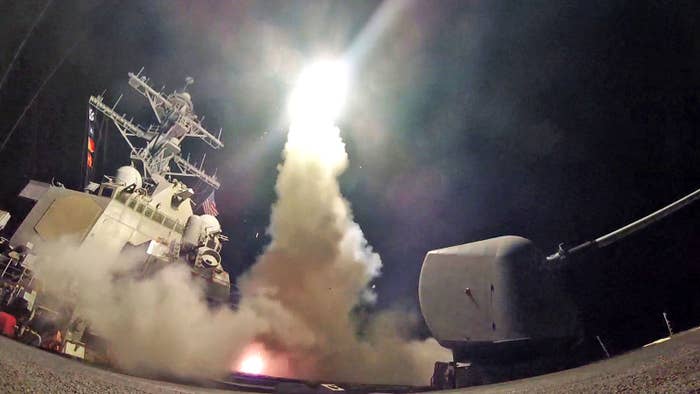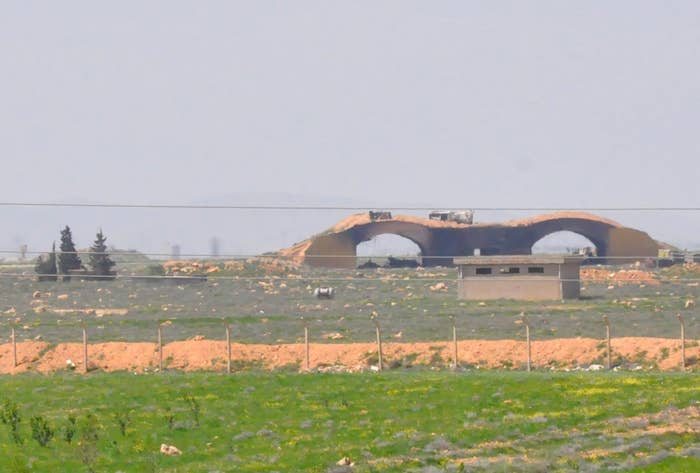
The Syrian military has begun moving planes back to the airfield struck by US Tomahawk missiles last month, two US defense officials told BuzzFeed News.
In the past week, the Syrians began returning Su-22 and MiG-23 fighter jets back to Shayrat airfield, which the US military attacked on April 6 with 59 Tomahawk missiles. The aircraft returning to Shayrat had been distributed throughout regime-controlled portions of the country, defense officials said.
In addition, the regime has repaired some of the damage caused by the US strike campaign. It’s unclear is whether there are any chemical weapons remaining at the base, defense officials said, repeating the administration’s assessment from April.
That the Syrian regime began returning its aircraft and conducting repairs to Shayrat airfield, just one month after a major US strike campaign appeared to be an attempt by the regime to signal the US strikes did not do any long-term damage to its air power.
But for critics of the US’s Syria policy, the return of the aircraft suggested the regime had concluded that short of carrying out chemical attacks on its own people, it was likely safe from further US attacks. Some had hoped the Trump administration’s decision to strike the airfield was the first signs of a new approach toward Syria’s six-year long civil war.

“Despite President Trump’s major decision to strike and deter chemical weapons use, the US still has no actual Syria strategy beyond the one the president inherited from his predecessor,” Jennifer Cafarella, a Syria analyst for the Washington-based Institute for the Study of War explained. “The regime now knows what the boundaries are.”
Since the strike, there have been no major regime offensives, leading others to fear that the return of its planes to the airfield signaled the regime getting ready to change that. In parts of Damascus, rebels have evacuated the city and regime forces regained full control of the city of Homs after the last remaining rebels left. In addition, the regime has made advances against ISIS in parts of southern Syria. Last week, the US struck a convoy of 20 suspected regime vehicles moving toward a base housing coalition troops near the city of al Tanf.
The Trump administration launched the missiles at the airfield in response to an April 4 chemical attack on the Syrian village of Khan Shaykhun, that killed at least 86 people. US intelligence showed that the planes that conducted the chemical attack, and a subsequent strike on a nearby hospital treated victims, took off from Shayrat Airfield, where both regime and Russian aircraft fly from.
According to US estimates, the April 6 strike destroyed roughly 20% of the regime’s operational aircraft.
Defense officials repeated Thursday what they said after the strikes — they were never intended to render the airfield inoperable but rather to prevent the regime’s use of chemical weapons on its own people.
“We would have expected them to return to that military base,” one defense official explained
US defense officials noted that within days of the strike, both the Syrian and Russians were quick to say that the strikes had not done sizable damage to their air capabilities. The Syrians began flying aircraft from the base within a day of the strike, for example. And in the days afterward, US officials said they believe the regime began keeping its aircraft near the Russian side of the base as a means to protect its air assets.
